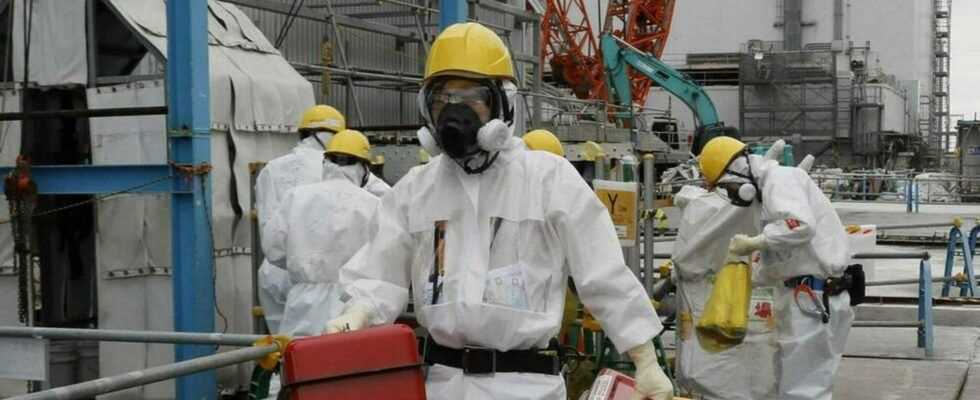Fukushima
This is what it looks like at the site of the reactor accident today
It is still mandatory to wear protective suits on the site of the nuclear power plant.
© imago images / ZUMA Press
Ten years have passed since the worst-case scenario at the Fukushima Daiichi power plant. The traces can still be seen today, the effects can be felt.
Ten years ago, a tsunami swept across parts of Japan, causing the worst reactor disaster since Chernobyl in and around Fukushima. Up to 20,000 people were killed. The air, soil, water and food were radioactively contaminated. The traces of the worst-case scenario have left deep scars in the land of technology.
It was March 11, 2011 when a 9.0 magnitude earthquake struck the coast of Japan. The epicenter was off the east coast of Honshus, and the tremors created a tsunami with waves several meters high. The result: The Fukushima Daiichi power plant was disconnected from the public power grid. The energy for cooling the fuel elements in the reactor cores was lost, the core material melted and explosions destroyed the facility's buildings. The released radioactive radiation forced the government to evacuate, during which 120,000 people had to leave their homes within a radius of 40 kilometers.
Half-life misfortune
The misfortune casts a long shadow. An area the size of Munich is still a restricted area ten years later. Of the people who had to leave their homes after the accident, only 26 percent have so far returned, said the Federal Office for Radiation Protection at a press conference in February. This is also not surprising, because some health effects have still not been conclusively recorded. It cannot be ruled out that illnesses will occur as a direct result of the accident.
To date, over a million tons of contaminated cooling and rainwater have been pumped out of the reactor buildings and stored in tanks on the site. Gradually, space is running out. Although the water has been purified down to traces of tritium, the question arises: what to do with it? Diluting and discharging into the sea is one of the plans of the Japanese government, which is meeting with fierce resistance from the population and abroad. The decision is still pending.
